REGIONAL DELICACIES OF GERMANY
Bratwurst, currywurst, and beer may come to mind when you think about Germany. But there’s more to the country’s cuisine than just grabbing a pint and eating sausage for breakfast, lunch, and dinner.
While farm-to-table might be all the rage these days, the regional delicacies of Germany have been locally-sourced for centuries.
Get ready to test your palate (and stretch your pants) with these food, drink, and activity must-dos that will help your client truly experience all the culinary nuances of the country.
Pairing our destinations with local foods and beverages is not only delicious, it’s a great way to get a whole new experience of the country.
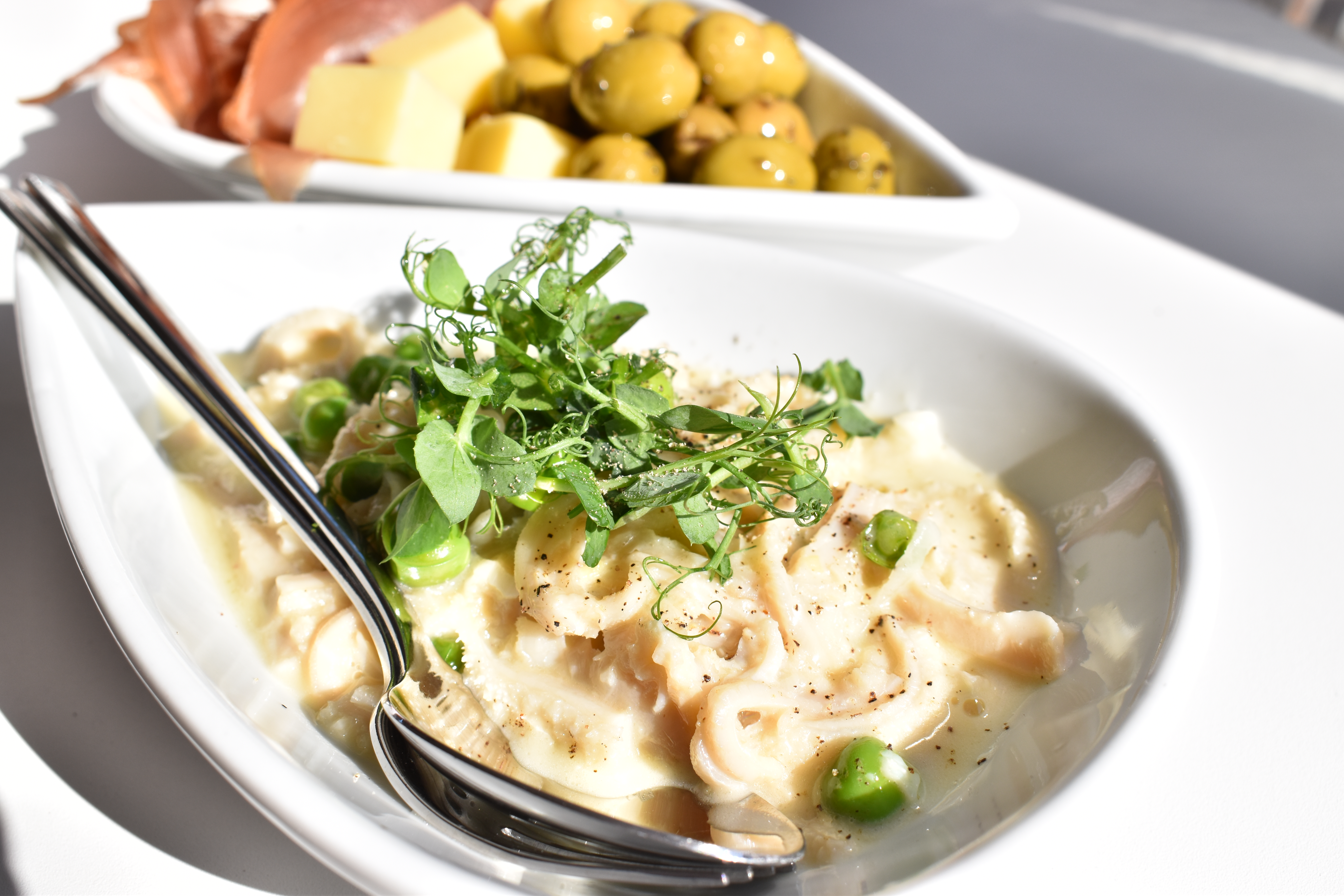
REGIONAL CUISINE
A rich diversity of regional foods
We have the Romans to thank for another German specialty – wine – which they brought to the Mosel near Triernearly 2,000 years ago. Today, vineyards line the banks of Mosel, Saar and Ruwer Rivers, as well as the Rhine from Wiesbaden to Koblenzand beyond.
Wine also plays a major role elsewhere. For instance in Freiburg, at the heart of Baden’s wine-growing region, you can savor a quarter-liter goblet of the nectar of the gods, accompanied by mouthwatering specialties such as Black Forest ham, locally grown white asparagus (between mid-April and mid-June), Black Forest trout, and game dishes.
Würzburg, the former capital of Franconia, is a grape-growing center with a number of famous large vineyards. The “Bürgerspital-Weingut Zum Heiligen Geist,” for example, is believed to have invented the “Bocksbeutel,” a flat, pouch-shaped bottle that is the hallmark of Franconian wine. Here you can participate in wine tastings and wine cellar tours, and the same holds for the Staatlicher Hofkeller and the “Weingut Juliusspital” (Juliusspital Wine Estate).
In Wiesbaden, follow in the footsteps of Fyodor Dostoevsky and stop at the Weinhaus Kögler, a typical wine pub. The Rheingau region houses the Riesling wines that mature to their highest perfection here. Visit to wine-growing monastery/cloister, wine seminars and wine tasting or even taking part into the harvest show all aspects of wine.
Savoring the specialties from the Koblenzregion is a particular and unique experience. Enjoy original dishes such as “Debbekooche” (potato pancake made of grated potatoes, bacon and onions), together with a young or mature wine from the steep slopes of the Moselle vineyards or the Rhine valley.
Thuringian bratwurst sausages and dumplings are served in Erfurt´s many beer gardens and restaurants. These local specialties are not to be missed!
In Münsteryou will find traditional fare like Westphalian ham, pork ragout, hearty stews, Pumpernickel (the black bread “born” in the region) and Rote Grütze (a cooled, just lightly boiled and sweetened ragout of fresh berries, topped with cream).
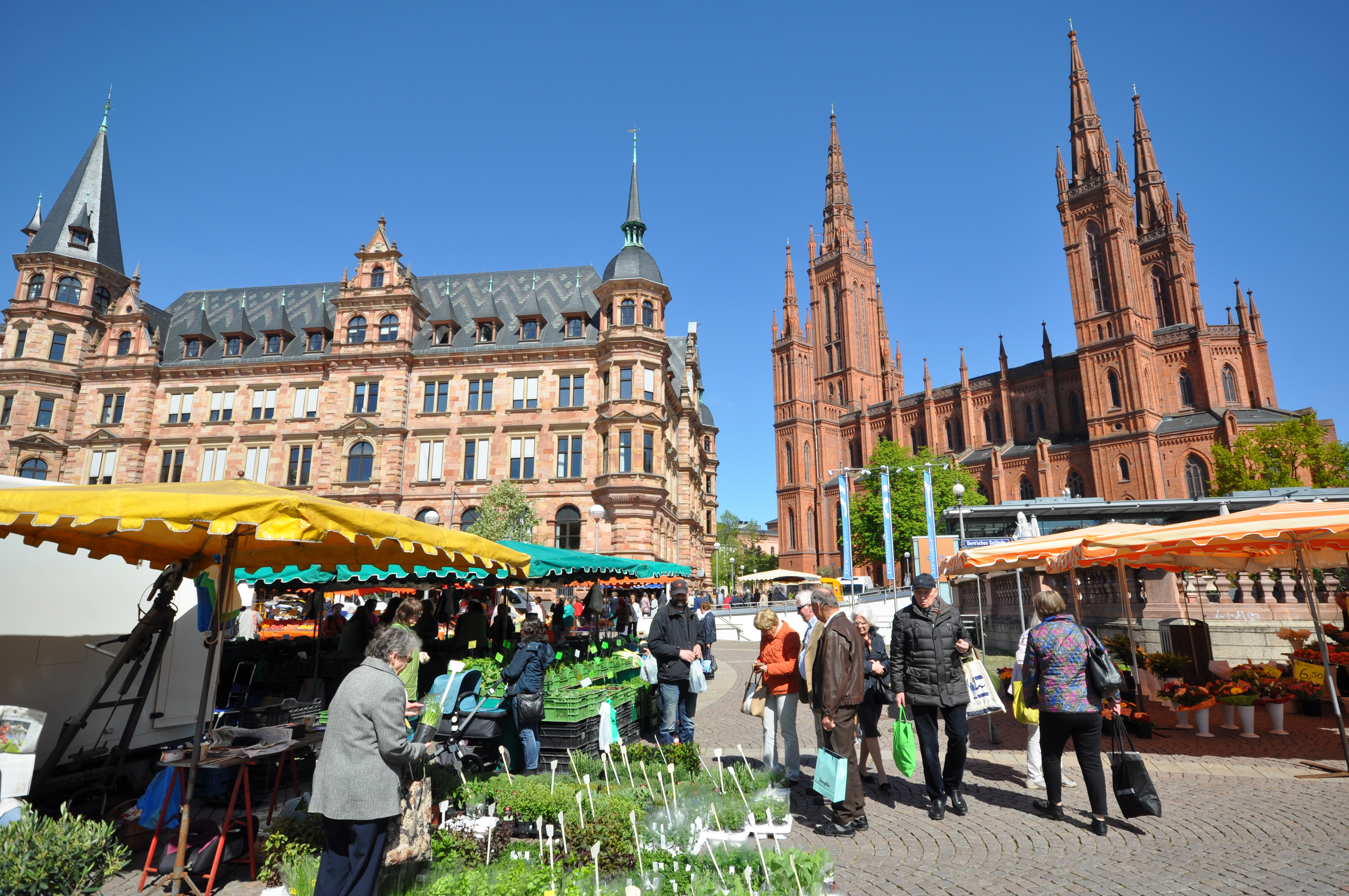
Germany’s way of socializing at Farmers’ markets
The best opportunity to experience and buy regional groceries is to visit a typical farmers’ market. It almost seems as if time stood still: men and women stroll comfortably and without haste across the market square, chat among each other or to the market women and get inspirations for their lunch from the wide range of freshly harvested fruit and vegetables and homemade cheeses and sausages from organic farming.
If one cannot decide from the wide selection, the stand operators are happy to support the decision-making with small samples. In addition to the good atmosphere, the air is filled with the scents of many different products. It smells deliciously of fresh baked goods, tangy cheeses, flowers and even the vegetable stands can be identified by their own fragrance.
Historic cuisine – feast to your heart´s delight
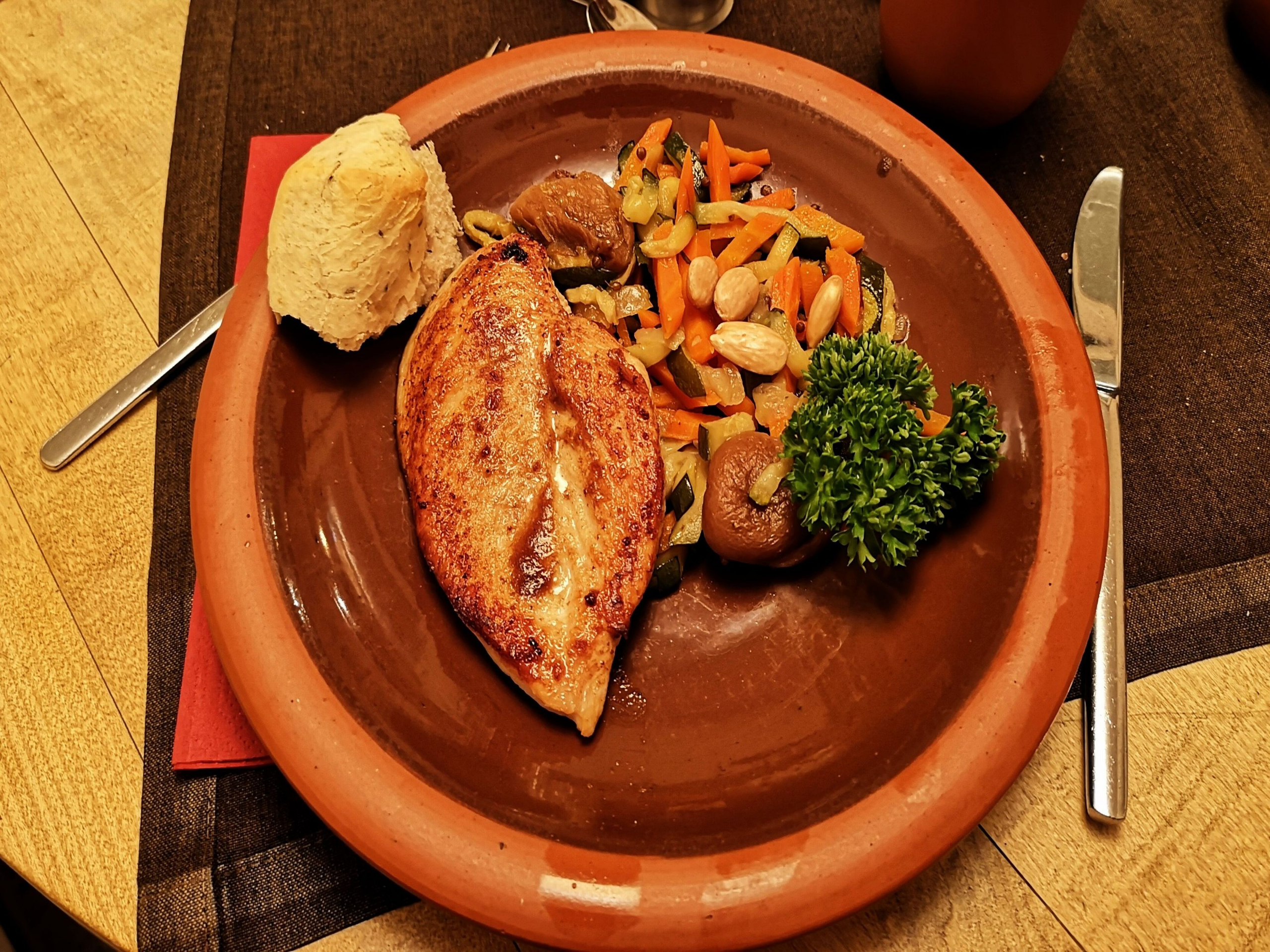
In Trier you can not only revive your rusty Latin, but also feast to your heart’s delight – as, once upon a time, its Roman founders once did. Old roman recipes of Marcus Gavius Apicius (30 a. C.) have been adapted and are originally recooked. You will be served in historic ambiance between escavations of the Roman Palace of Emperor Constantine the Great.
The “Güldenes Schaf” (Golden Sheep) in Heidelberg takes a flexible approach to time travel. Here the master of the house lets you experience traditional customs and cultural history of the region from various eras, together with historic meals, the right music, and fascinating explanations.
MEET THE CHEFS!
ENJOYING TOP QUALITY
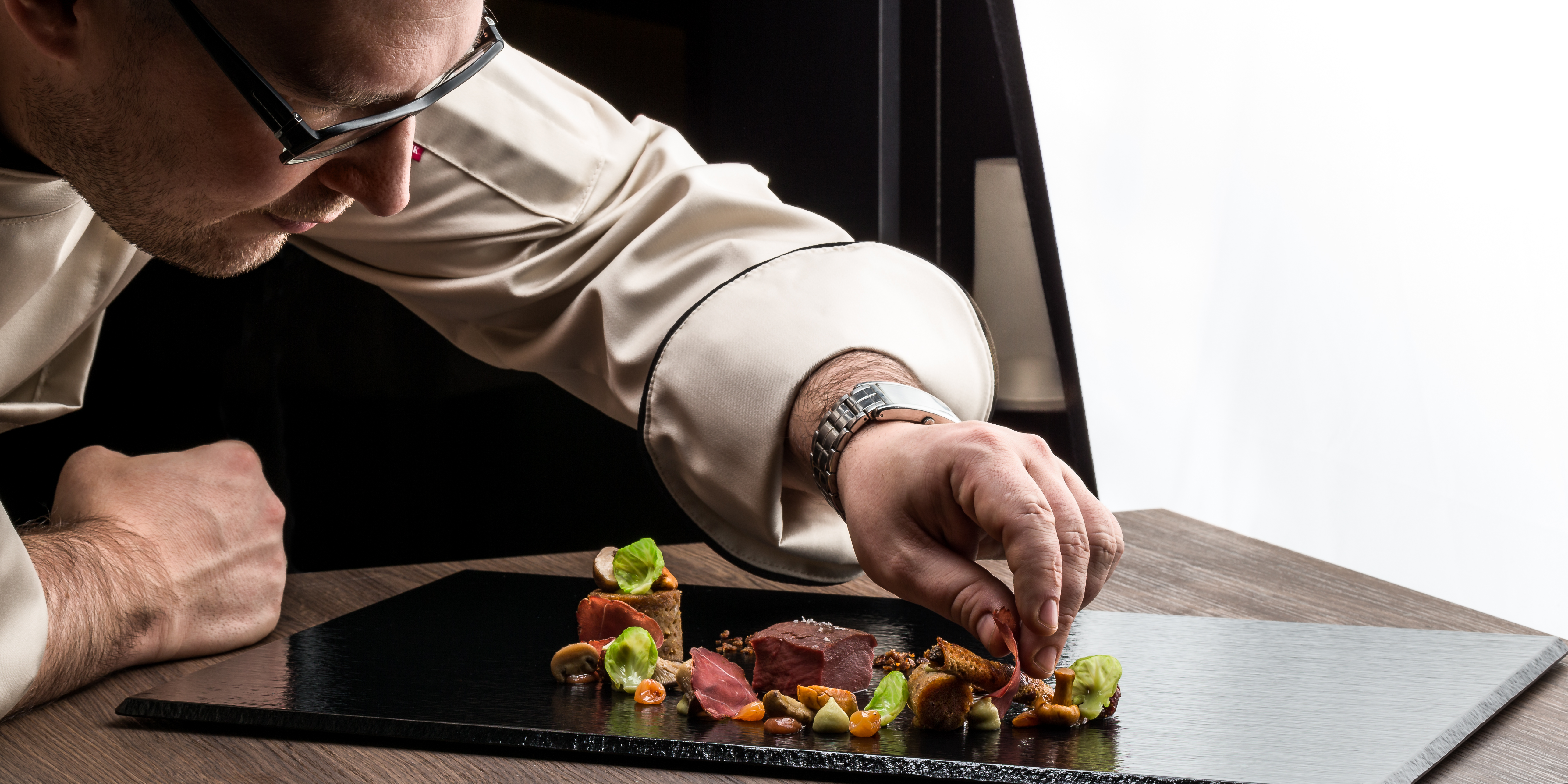

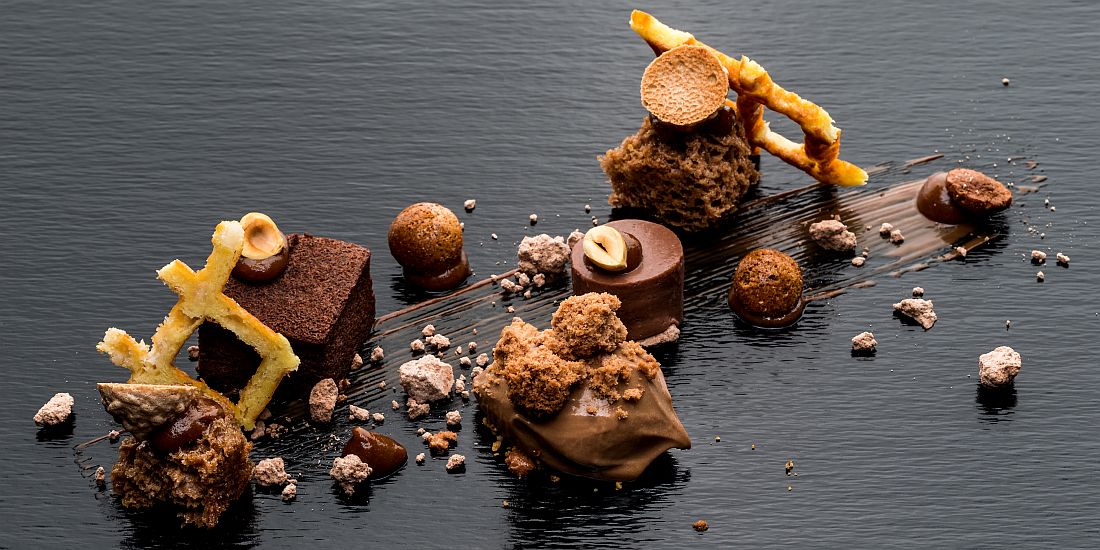
Double Michelin star chef Wolfgang Becker stands for a clear and straightforward cuisine in Becker’s Restaurant (Trier). Dirk Seiger creates perfect balanced and creative cuisine experiences in Lübeck Travemünde (Buddenbrooks Restaurant) and a wind of change has blown through the classic Würzburg restaurant “Reisers am Stein” ideally situated amid the vineyards: Bernhard Reiser is producing french inspired cuisine paired with its Franconian roots.
The restaurant “Die Ente” (The Duck) is located in the 5-star hotel “Nassauer Hof” in Wiesbaden. In 1979, the restaurant was awarded with a coveted Michelin star which it has retained ever since. The restaurant’s young head chef, Michael Kammermeier, presents his very own interpretation of exquisite, straightforward classic European cuisine with a very personal touch.
Gourmets, enjoying top quality, organic, hand selected ingredients and who are willing to try unusual food compositions have to visit the restaurant “August” of Top Chef Christian Grünwald in Augsburg. Guide Michelin as well as Gault Millau mentioned the two-star restaurant benevolently.
In Würzburg, Daniel Schröder produces his mouth watering menus in Kuno 1408 restaurant – named after one of the owners of the “Rebstock” hostelry (established in 1408).
Mario Sauer uses very best in ingredients for his fine, creative cuisine in Heidelberg (Restaurant Le Gourmet). Located in the most famous Heidelberg castletop chefs Martin Scharff’s restaurant “Scharff’s Schlossweinstube” boasts various historic dining rooms and a lovely terrace with a view of the castle courtyard.
© Image Rights: Top Chef images – KUNO 1408/BEST WESTERN PREMIER Hotel Rebstock GmbH

